All-25: Introducing our list of the best NFL players of the last 25 years
theScore's Eras project assessed the best 25 players of the past 25 seasons in the NBA, spanning the years since Michael Jordan retired, and MLB, following the epic home run chase of 1998.
This installment counts down the top players of the NFL's last quarter century, over the next five days.
Peyton Manning's first NFL season was erratic, challenging, and ultimately inconsequential. His second signaled he'd rule the league.
Exhibiting a clutch gene, Manning led a series of comebacks in 1999 that sparked the Colts to 13 wins and a division title. The young gunslinger cut his interceptions as a second-year pro, and he outdueled Dan Marino in the Miami sunshine. Less than a minute remained in a pivotal December matchup when Manning found Marvin Harrison on slant routes for gains of 16 and 18 yards. He teed up Mike Vanderjagt's tiebreaking 53-yard field goal at the buzzer.
A passing of the torch was underway. The 1999 season marked the end of the rocket-armed Marino's groundbreaking run with the Dolphins. Broncos legend John Elway had just retired on top as a repeat Super Bowl winner. They left the NFL as Manning's career took off - he was the MVP runner-up in '99 - and Tom Brady got set to win a record number of championships.
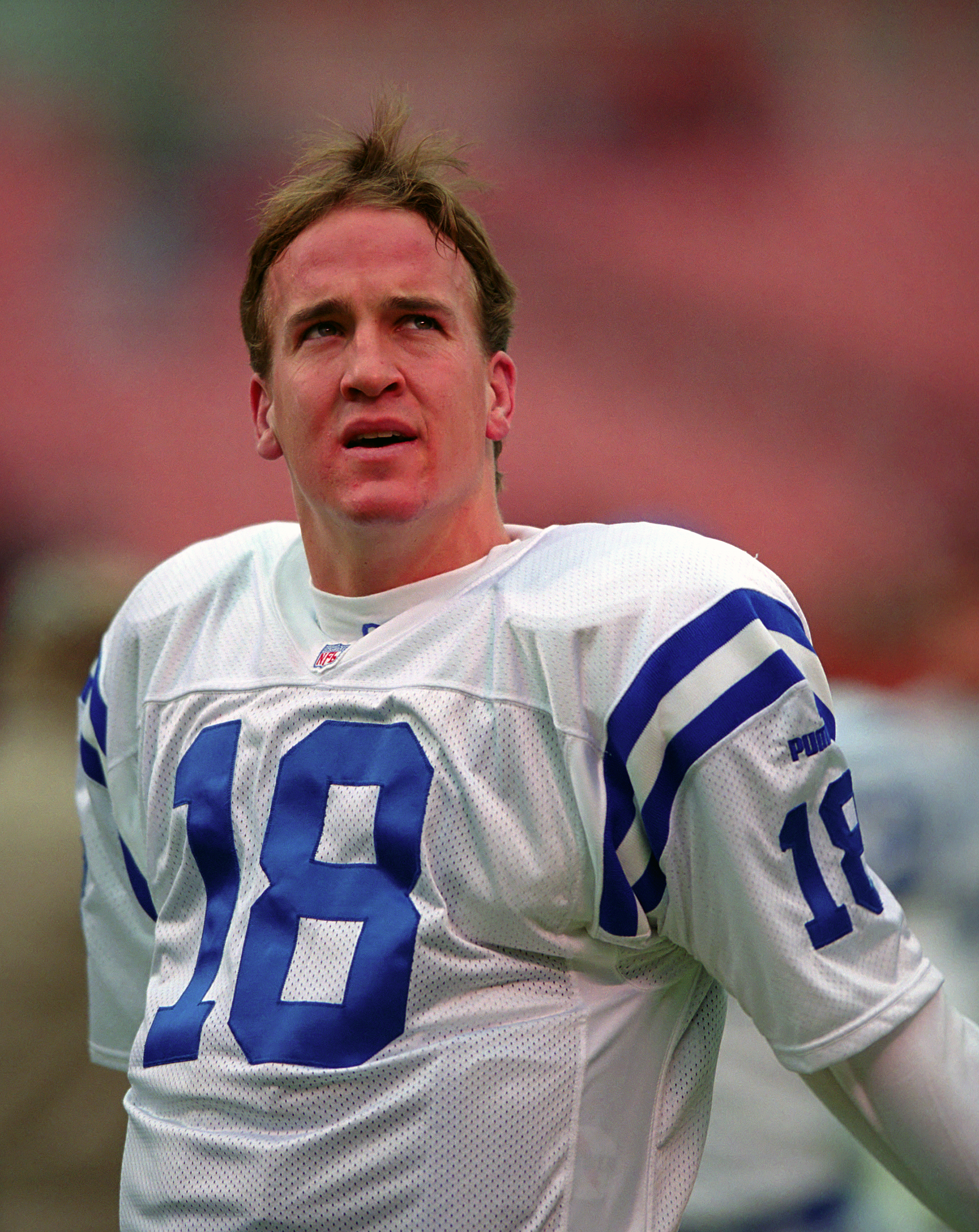 George Gojkovich / Getty Images
George Gojkovich / Getty Images From 1999 onward, either Manning or Brady - usually both - always reached the NFL postseason. Brady's Patriots constantly triumphed, which sweetened Manning's eventual breakthroughs. Their rivalry, and opponents' attempts to unseat them, defined an era.
Football changed during their reign. Concussion awareness rose, CTE was diagnosed in hundreds of deceased players, and youth participation in the sport flagged. At the same time, the explosion of fantasy competitions and online betting reflected feverish interest in the product. NFL games became TV's greatest spectacle, accounting for a huge share of the most-watched telecasts every year.
The league grew, expanding to 32 franchises, and evolved stylistically. Analytics established - and a dazzling collection of quarterbacks showed - that passing was the efficient way to move the ball. Scoring climbed as star QBs redefined benchmarks, often clearing 5,000 yards and topping 50 touchdowns for the first time.
Wide receivers replaced running backs as the most valuable playmakers. Tight ends became key targets, with the best producing like No. 1 wideouts. The emphasis on protecting the blind side enriched left tackles. New rules complicated the act of defending, but intelligent, punishing, smashmouth units still led teams to the Lombardi Trophy - sometimes by silencing Brady or Manning in the Super Bowl.
This series, a celebration of the Brady-Manning era, ranks its best players based on the factors that shape a legacy: awards, total production, impressiveness of peak, playoff heroism, and influence on the sport. It spotlights greatness all over the field, though the final list of 25 wasn't to accommodate kickers and punters, whose contributions in limited playing time weren't sufficiently immense.
 Focus On Sport / Getty Images
Focus On Sport / Getty Images We weighed stats and accolades compiled in the last 25 seasons: 1999-2023.
That limitation erases Marshall Faulk's Colts tenure, as well as the Rookie of the Year campaigns of Randy Moss and Charles Woodson. While those three were locks to be ranked, the timeline disadvantaged certain stars of the '90s (Brett Favre, Warren Sapp, Michael Strahan) and present day (Tyreek Hill, T.J. Watt, Myles Garrett). Only a few active players had the resume to appear in this ranking.
Contenders for our exclusive list had a towering bar to clear. Election to the Pro Football Hall of Fame didn't guarantee inclusion. Nor did winning an MVP or Super Bowl MVP award. Prolific QBs like Eli Manning, Matt Ryan, and Kurt Warner didn't make the cut.
Snubs include Larry Fitzgerald, who boasted longevity (second in career receptions and yardage) but lacked a spectacular peak (one First-Team All-Pro nod in 17 seasons). Luke Kuechly, Von Miller, Terrell Suggs, and Bobby Wagner weren't as dominant as our chosen linebackers. We considered but omitted Antonio Gates, Zack Martin, Jonathan Ogden, Brian Dawkins, and Justin Tucker.
Three final cuts were painful.
Harrison was the best receiver for excellent Colts teams. He modelled consistency, had three 1,500-yard seasons, and cracks the top 10 in career catches, yardage, and touchdowns. But he was squeezed out by a record-setter (Calvin Johnson) and a superior scorer (Terrell Owens) at his position.
Lockdown cornerback Darrelle Revis supplied an immaculate peak, and his aura was iconic. Smart QBs stopped throwing to his side of the field, leaving their wideouts marooned on Revis Island. He was excluded in favor of Champ Bailey, whose sizeable achievements over a longer span tilted the scales.
Dolphins great Jason Taylor won a Defensive Player of the Year award and was an ironclad Hall of Famer. But the same goes for Brian Urlacher, who made one more All-Pro team than Taylor and propelled the Bears to a rare Super Bowl appearance.
There are only 25 places in this club, and space vanished quickly. Our choices will spark disagreement - which is part of the fun.
Pro Football Reference and the invaluable Stathead database provided most of the stats we reference. Access to endless information about the game is another product of the era. Numbers abound on the internet, historical context can be mined, and YouTube highlights jog dormant or treasured memories.
The NFL is everywhere today. These special players, unveiled this week in groups of five, helped make that happen. - Nick Faris
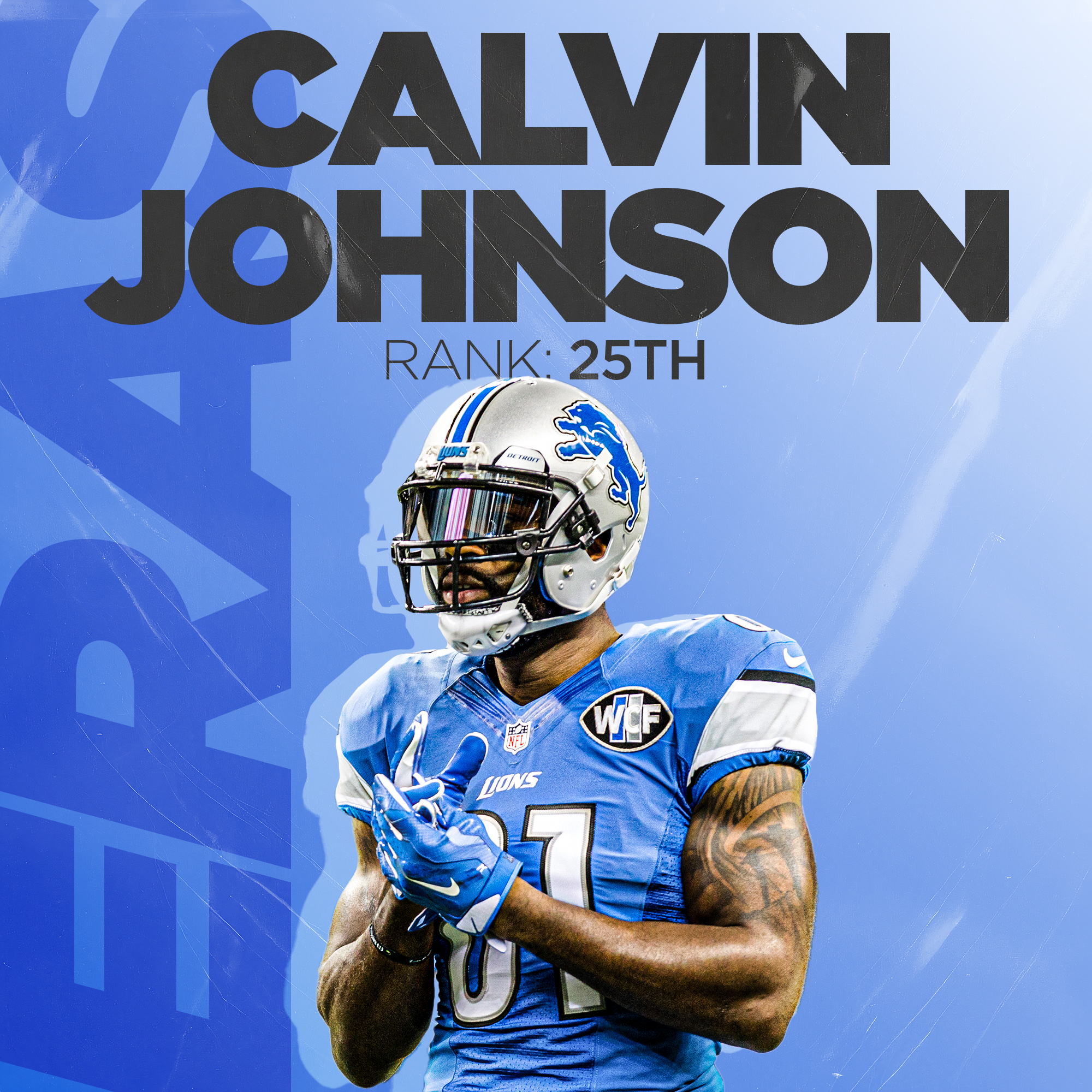
Era teams: Detroit Lions 2007-15
Signature performance: Though the Lions were 4-12 in 2012, Johnson's record-shattering pace made the year unforgettable. Johnson hunted down Jerry Rice's single-season mark for receiving yards (1,848) and even put some distance between himself and the 49ers legend, registering 1,964.
The NFL had grown accustomed to Johnson's dominance, but this was unlike anything seen before. We're talking 11 games of 100-plus yards - eight were consecutive, another NFL record - and two games of 200-plus yards. Johnson's 122.8 receiving yards per game are the most tallied by a receiver in the Super Bowl era (minimum 10 appearances).
It's a testament to Johnson's generational talent that no one's been able to dethrone him despite the schedule's expansion to 17 games.
Why he's here: Longevity's an important topic when debating the best players, but while Johnson's career spanned only nine years, it was one of the greatest runs in NFL history.
Johnson's remarkable numbers speak loudly. Between the record-breaking campaign in 2012, his 329-yard game in 2013, and his 86.1 yards per game career average, there's more than enough statistically that boosts Johnson's resume.
What transcends his play to legend status is that Johnson accomplished all this while playing for a Lions franchise that was typically poor on the field. Teams game-planned massively to stop Megatron. No matter how much attention was paid to him - double or even triple coverage - he'd somehow find a way to produce.
Johnson's career ended prematurely, but all who witnessed the freakish receiver can agree he provided a peak that'll likely never be replicated. - Daniel Valente
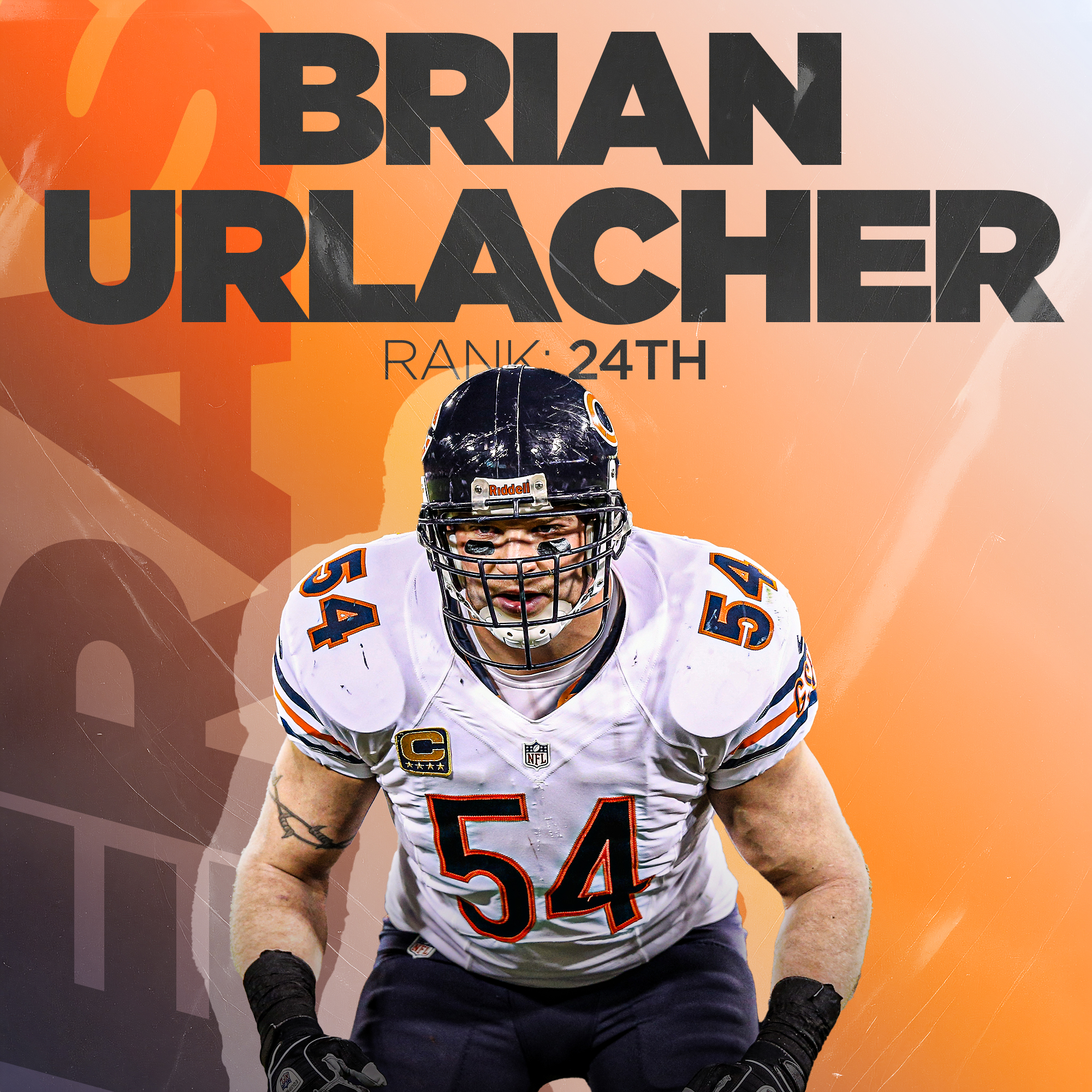
Era teams: Chicago Bears 2000-12
Signature performance: Urlacher dominated a Falcons team led by rookie Michael Vick in Week 4 of his superb 2001 season. The star linebacker welcomed Vick to the NFL by recording five tackles, one sack, one interception, one forced fumble, and a 90-yard fumble-return touchdown.
Stuffing the stat sheet, Urlacher finished the 2001 season with 118 tackles, six sacks, eight pass breakups, three interceptions, and two forced fumbles. He even caught a go-ahead 27-yard touchdown pass on a fake field goal. Urlacher's absurd performances helped the Bears improve from five to 13 wins. He ranked fifth in MVP voting and was the runner-up for Defensive Player of the Year.
Why he's here: Urlacher was the heart and soul of a Chicago defense that reached Super Bowl XLI - the franchise's best moment in recent memory - despite the shakiness of QB Rex Grossman, who threw 20 interceptions that year.
The 2006 Bears defense topped the NFL in takeaways while ranking third in points allowed and fifth in total yards. Peyton Manning's Colts prevailed in the title game, but the campaign illustrated what made Urlacher special.
One of the most intelligent, physical, productive defenders of his era, the New Mexico product ranked in the top five for DPOY four times, winning once. He was a member of the NFL 2000s All-Decade first team.
Thanks to the likes of Dick Butkus, Bill George, and Mike Singletary, great linebacker play is embedded in the Bears' DNA. Urlacher continued the team's long lineage at a level that landed him in the Hall of Fame. - Caio Miari
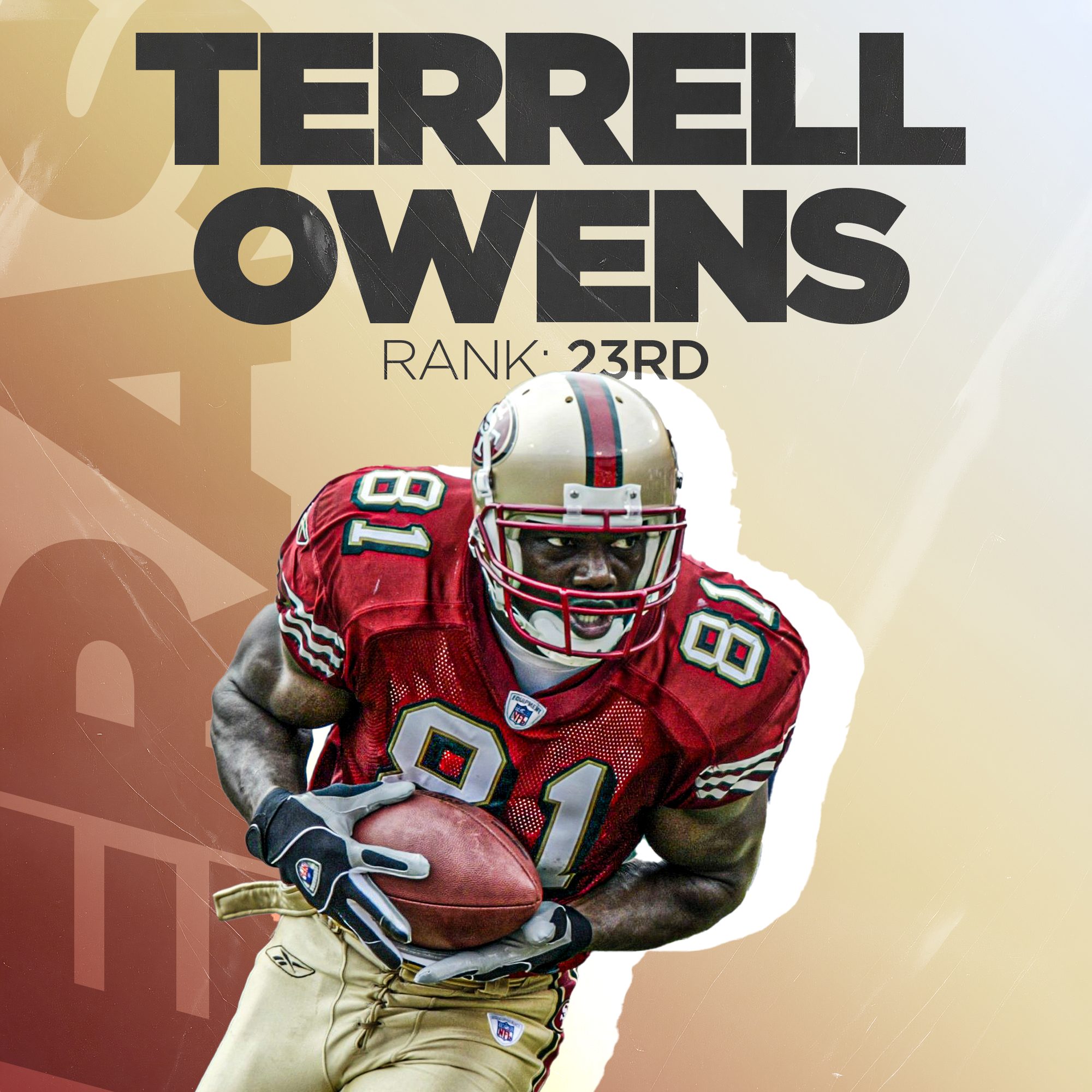
Era teams: San Francisco 49ers 1999-2003, Philadelphia Eagles 2004-05, Dallas Cowboys 2006-08, Buffalo Bills 2009, Cincinnati Bengals 2010
Signature performance: Owens' heroics fueled an epic comeback in the 2002 wild-card round. The 49ers trailed by 24 points in the second half when the star receiver took over against the Giants, catching a touchdown pass and back-to-back two-point conversions as New York melted down, losing 39-38.
Earlier in the game, Owens broke tackles on the Niners' first offensive play to turn Jeff Garcia's short throw into a 76-yard score. Owens completed a 25-yard trick pass on another TD drive. He gained 177 yards on nine receptions by the time the Giants bungled the snap on a game-winning field-goal attempt at the buzzer.
Why he's here: Except for Rice, no NFL wideout scored at will like his successor in San Francisco.
Owens crossed the plane at a peerless rate in our era. He caught 127 touchdowns in 171 games, a rate of three every four games, and his showy celebrations mocked his past and future teams. Owens slammed the ball on the Cowboys logo when he was with the 49ers and flapped his arms like an eagle when he played for Dallas.
T.O.'s career was dramatic and surreal. The ringmaster of his own circus, he spoke ill of some of his QBs and fielded media questions about a dispute with the Eagles while working out shirtless in his driveway. On the field, he could fight through contact and win 50-50 battles or footraces. Owens' five All-Pro selections - all first team - were achieved with three different NFC powerhouses.
From 2000 onward, Owens always led his squad in receiving yards, even when Philadelphia scratched him for detrimental conduct for most of the '05 season. His 20-catch game for the Niners, 98-yard score for the Bills, and 222-yard throwback outing for the Bengals delighted fans. - Faris

Era teams: Washington 1999-2003, Denver Broncos 2004-13
Signature performance: Bailey swiped a pass that was overthrown to Cowboys tight end Dan Campbell and ran it back for a 65-yard touchdown on Thanksgiving 2005. By opening the scoring in Denver's 24-21 overtime win, he helped the Broncos coast to their first division title since Elway's retirement.
Bailey was in the process of compiling a five-game interception streak, which is one game shy of the NFL record. Between the 2005 and 2006 seasons, he paced the league with 18 picks and 44 pass breakups.
Why he's here: A brilliant cover corner, Bailey weaponized his enviable blend of traits - elite anticipation, scorching speed, and sure hands - to punish QBs who threw to his side of the field.
Some wised up, ignoring the wideouts he blanketed for entire quarters or games, but Bailey still led the era with 203 breakups and ranked fourth with 52 interceptions. His 12 Pro Bowl nods over 15 seasons set a record for defensive backs. Across all positions, only three defenders (Ray Lewis, Julius Peppers, and Wagner) amassed more approximate value than Bailey since 1999.
Bailey picked off throws in his NFL debut, his playoff debut, and his Broncos debut after a contract stalemate with Washington led to a blockbuster trade. He bridged Broncos eras, starring between the Elway and Manning years, and humbled Brady in the 2005 postseason, authoring a famous 100-yard interception return that was stopped at the goal line by tight end Ben Watson's ultimate hustle play.
Bailey could lower the boom, outpacing almost every cornerback in career solo tackles (820) and tackles for loss (42). Receivers who finally escaped his coverage rarely gained much ground. - Faris
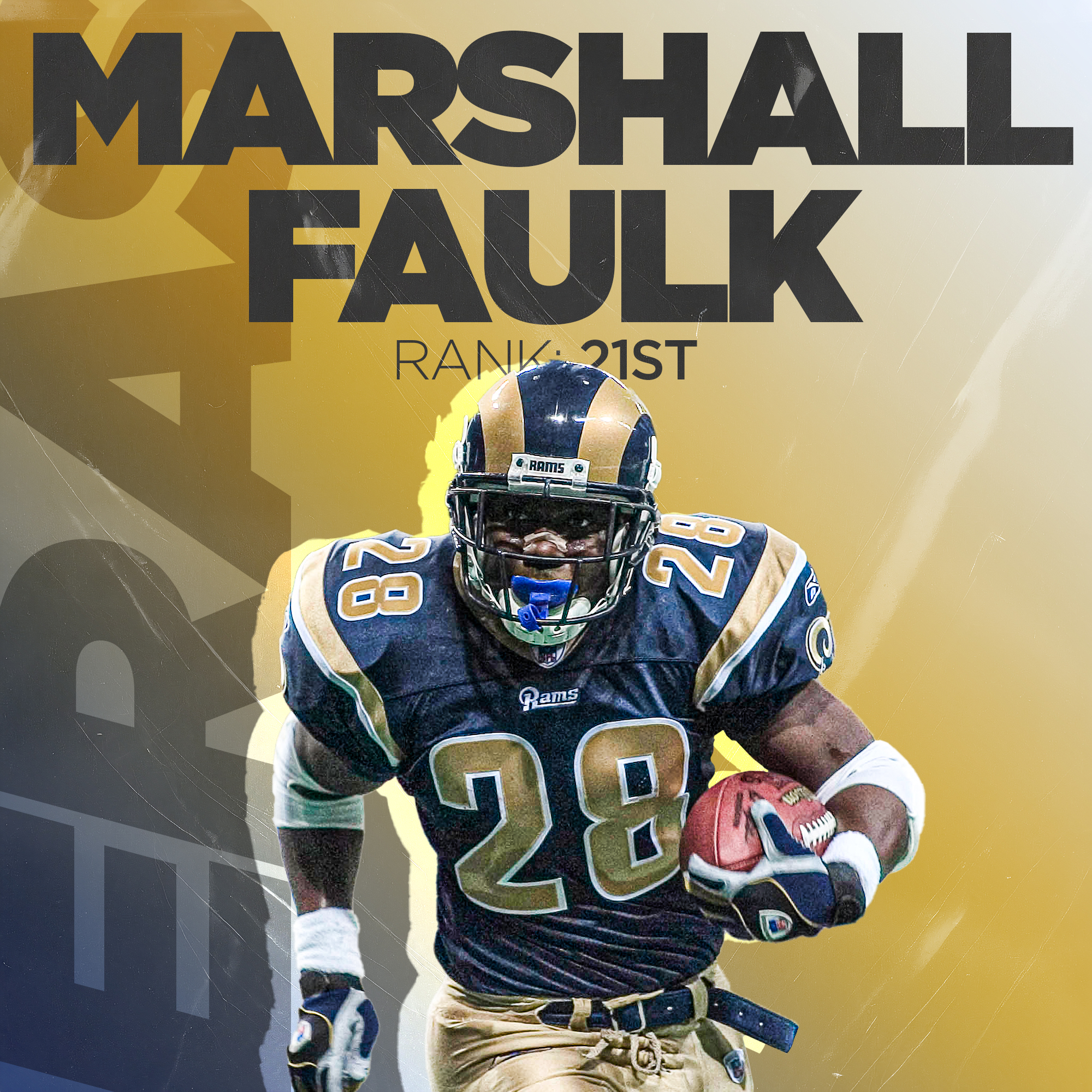
Era teams: St. Louis Rams 1999-2005
Signature performance: As the Rams fought for a playoff spot late in the 2000 season, Faulk elevated his game and put up numbers that look like typos. In Weeks 15-17, he recorded 571 scrimmage yards and 11 touchdowns. His 220 rushing yards, seven catches, and three total TDs in a must-win finale led St. Louis to victory.
Faulk was named NFL MVP despite missing two games because of injury. Here are other incredible facts from his 2000 regular season:
- Scored in 11 of 14 appearances
- Had seven multi-TD games, including three with four TDs
- Twice recorded more than 200 rushing yards
- Had only one game with no TDs and fewer than 90 scrimmage yards
- Never fumbled on 334 touches
Over a 17-game season, Faulk's averages in 2000 would result in 1,650 rushing yards (5.4 per carry), 22 rushing TDs, 98 catches, 1,008 receiving yards, and 10 TD receptions.
Why he's here: Prime Faulk was so absurd that he made our cut despite playing five ineligible seasons before 1999 - all of which featured 1,000-plus scrimmage yards. Faulk was the sport's most dominant playmaker from 1999 through 2001, matching Earl Campbell's record of three straight Offensive Player of the Year awards.
Over those seasons, Faulk led the NFL in scrimmage yards once (2,429 in 1999) and total touchdowns twice (26 in 2000 and 21 in 2001). He paced the league in yards per carry in all three campaigns, averaging 5.4. No running back has since topped his 1,048 receiving yards in 1999.
Traded from the Colts to the Rams in 1999, Faulk became a key member of "The Greatest Show on Turf," the high-flying offense that led St. Louis to one Super Bowl title in two championship appearances. Faulk's pass-catching ability, combined with his elusiveness in the backfield, helped him post video-game numbers while anchoring a historic unit.
It's hard to rank Faulk higher given he battled injuries and his production dropped after 2001. But no running back over the past 25 years matched his astounding peak. - Miari
Follow the rollout all week long. Tuesday: Nos. 16-20.
Nick Faris, Caio Miari, and Daniel Valente cover the NFL at theScore.
Copyright (C) 2024 Score Media Ventures Inc. All rights reserved. Certain content reproduced under license.